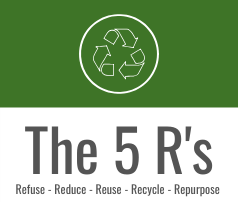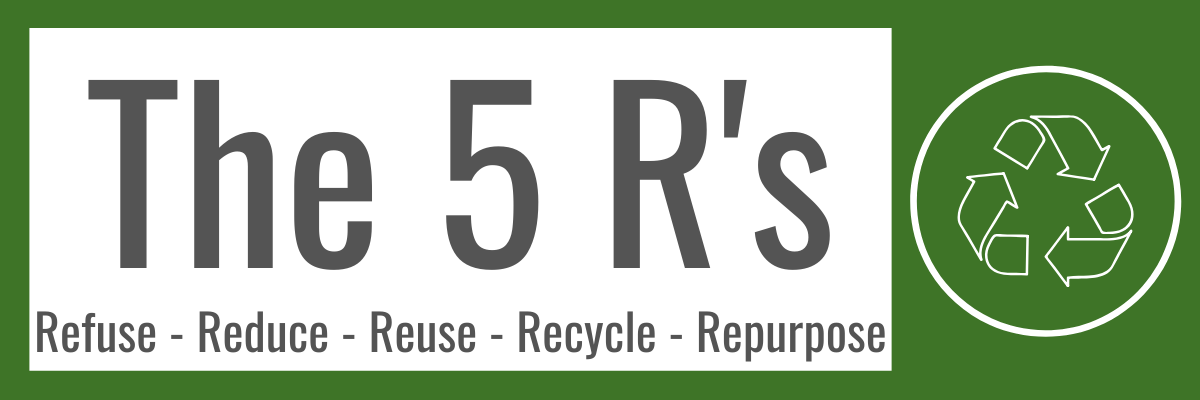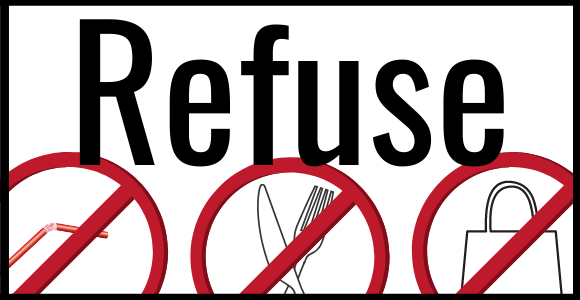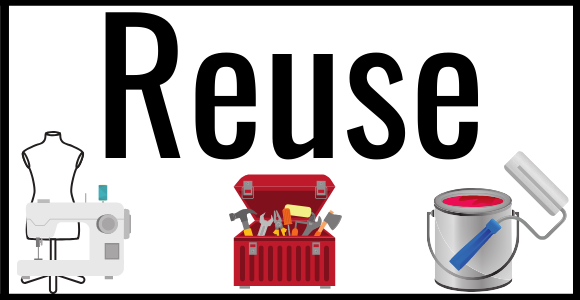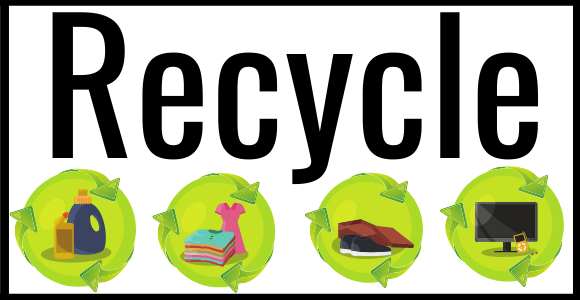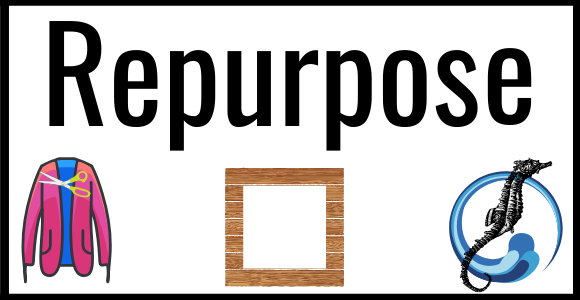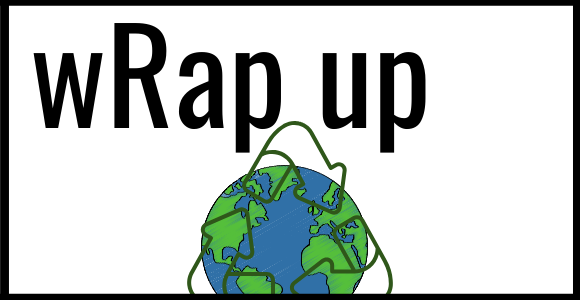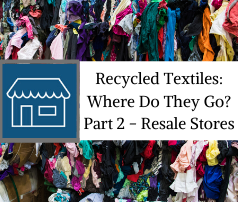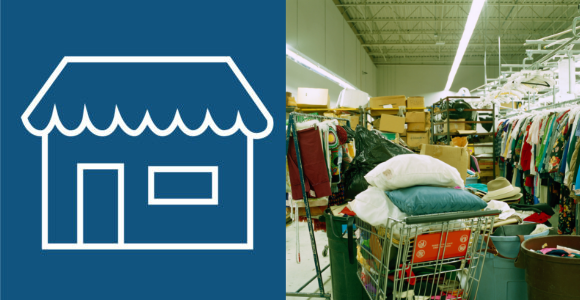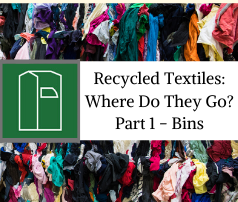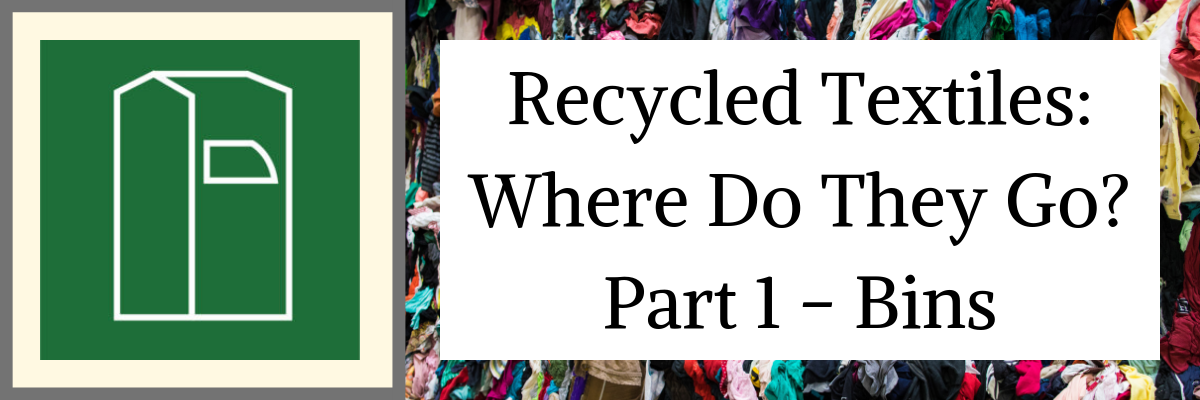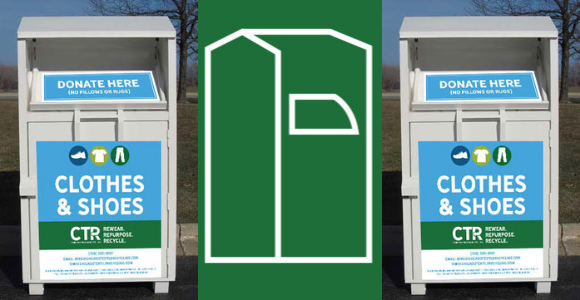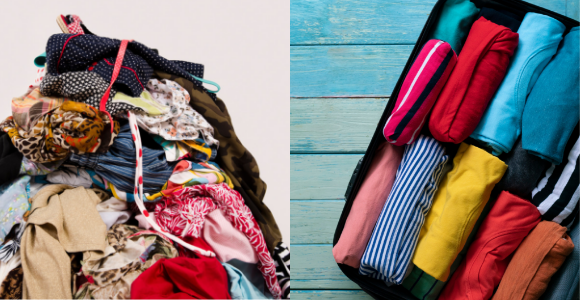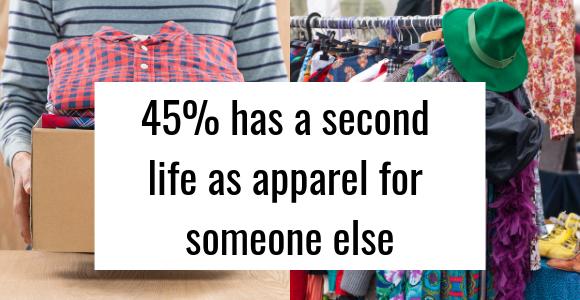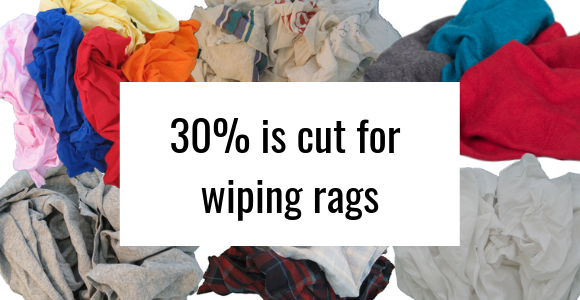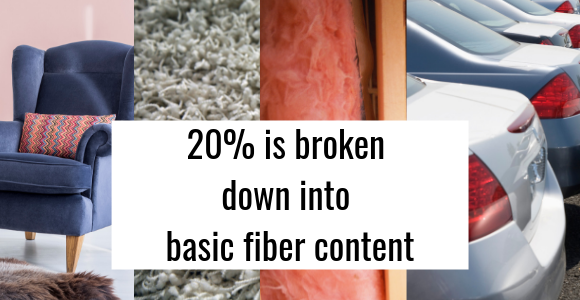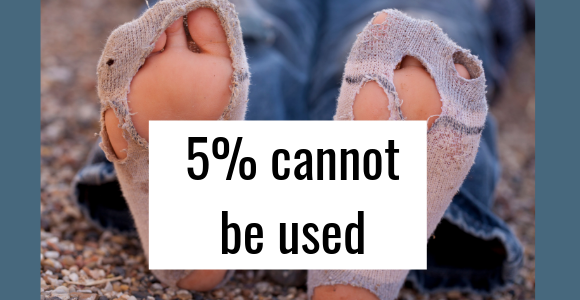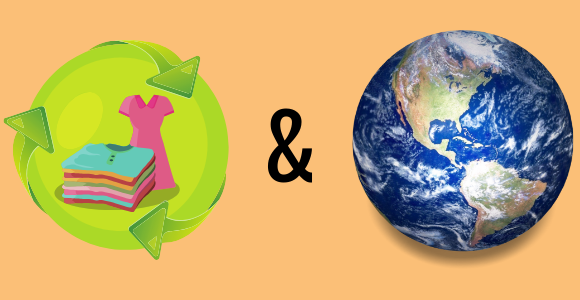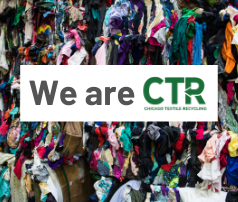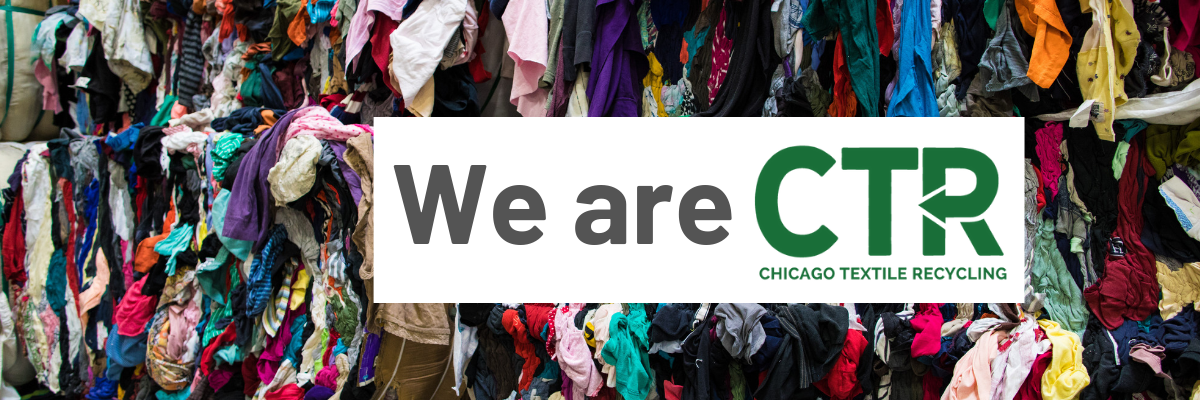 Recycling
Recycling
5 Easy Recycling Resolutions for You this New Year

In a few days we will celebrate New Years, and with each new year comes new resolutions to make positive changes in our lives. While brainstorming ideas on what you’d like to work on in your private and professional life, please consider these simple ideas that will further efforts made to keep textiles and other materials out of landfills and keep your home tidy too. As we mentioned in our last blog on the 5 R’s, “over 11 million tons of recyclable clothing, shoes, and textiles make their way into landfills each year.” If we all do our part in recycling our textiles and household goods, we can make a large difference in the care of our planet and its future. Here are five ideas to inspire and get you started or help you continue in your recycling journey…
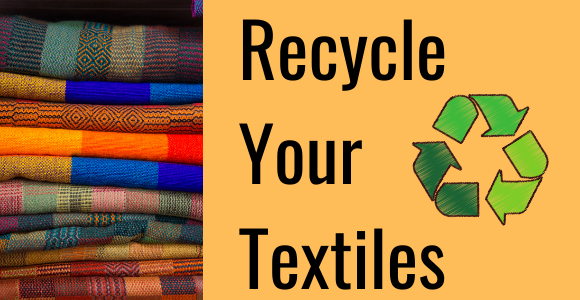
1. Recycle Your Textiles
Though Spring hasn’t arrived, a big cleanout is not completely necessary to simply begin recycling textiles as they wear out or no longer fit. Recycling textiles is important because textiles occupy “about 5% of landfill space and the amount is growing.” (Read more here) “Consumers throw away shoes and clothing [versus recycle], an average of 70 pounds per person, annually.” This means we have a long way to go in our recycling goals and in helping the environment.
What You Can Do
The first and most basic step is choosing to start a pile for the donation bin or resale store rather than immediately filling the trash can with old textiles. Remember to donate ALL old textiles because those who sort your donation will know best as to what is recyclable and what can only end up in landfill.
Education about textile recycling is another step in solving this problem so spread the word in the workplace and in your personal relationships so we can move toward becoming a greener country.
For more info about bin locations for Chicago Textile Recycling, please contact us. Also, we are perpetually looking to expand our area with new bin locations, so if you know of a local business near you that could host a bin, please let us know!
Benefits
-Aid in keeping textiles out of landfills
-Sense of purpose in helping the environment
-Sharing newfound knowledge to aid in spreading awareness about the importance of textile recycling
-Gives others inexpensive buying options for their own closets
–Creates rags for numerous industries in their day to day cleaning needs
-Used as insulation/stuffing/sound-proofing/padding etc
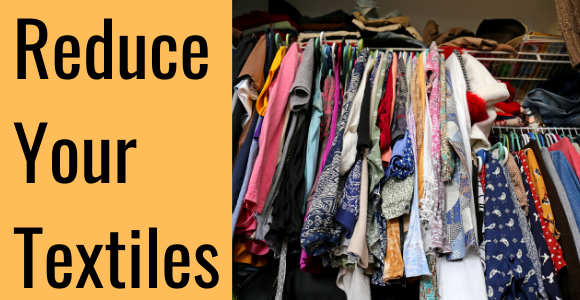
2. Reduce Your Textiles
Another resolution you can make for 2020 is to reduce the amount of clothes you buy. Fast fashion is a large part of the problem why many textiles end up in landfills. Fashion companies are over-producing clothes to constantly offer new items for sale and using cheaper materials that give clothes a shorter shelf life. “One garbage truck of clothes is burned or sent to landfills every second! The average consumer bought 60 percent more clothes in 2014 than in 2000, but kept each garment for half as long.” Advertising constantly pushes consumers to buy these new clothes which also adds to the amount of clothes that consumers then throw out. Part of solving this issue is for the retailer to see their role in this problem and producing less, but the other part of solving it is for you as the consumer to send a message to retailers by buying less.
What You Can Do
The main step for this resolution is to create the goal of buying less textiles.
Another step to help you in this goal would be to go ahead and unsubscribe from retail store emails, cancel those retail credit cards, and limit the advertising you choose to view on tv and the internet.
Coinciding with the first resolution in reducing your textiles would be to clean out your closet and textiles in your home and recycle what you no longer need or want. If you think you may need to buy something new, instead take everything out of your closet and perhaps you will discover items that you forgot existed. Get creative! Look online at different fashion blogs, pinterest ideas, youtube videos using clothes you already have and get new ideas on ways to wear these items with other pieces you already own. You can create a whole new wardrobe with items you already have.
Benefits
– Gives you a better sense of what you have and what to wear
-Simply paying attention to what clothes are wearing out quickly can help you make more informed choices when buying clothes and being mindful about the importance of choosing quality clothes for the long-term over quantity.
-Creativity with your styling choices and ideas
-Dual benefits of saving money you can spend on other things, pay off debt, or save for future
-This leads to another possible resolution…
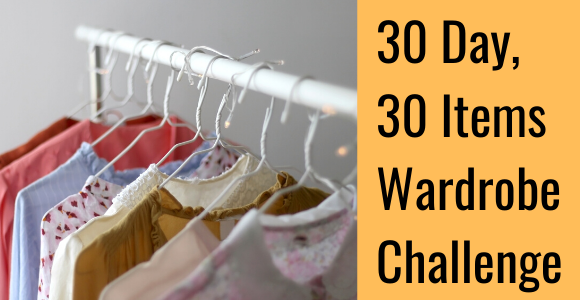
3. 30 Day, 30 Items Wardrobe Challenge
The third resolution is a 30 day, 30 items wardrobe challenge. There are numerous blogs about it and the benefit of being limited in your everyday options of what to wear. Blogger Emily Recker wrote about her experience here. Doing this challenge/making this resolution will help you discover what you own, what you need, and be more mindful of how many clothes you have. This challenge also helps in getting more creative, intentional, and easing the morning routine in drastically decreasing options in what to wear, which has been a positive experience for most people who have taken this challenge.
Emily shared that “the crazy part is—I didn’t feel frustrated or limited by this challenge–I felt freedom. I spent less time trying to figure out what I’d wear every day, less time picking clothes up off the floor (bye, clutter…hello calm), less time digging through drawers, and even less time folding laundry!” Doesn’t that sound dreamy: “less time folding laundry”? She went on to say she enjoyed the challenge, that the process was fun, and that she wanted to keep going after the 30 days were up.
What You Can Do
For Emily’s challenge, she chose to only include tops, bottoms and shoes in her 30 items, and to not count undergarments, pjs, and workout clothes, so it is up to you to decide what to include or exclude from your thirty.
Choose close to 30 items from your closet that are basic enough that they pair well together, and maybe one or two pieces that pop more or are busier if you enjoy more variety in patterns and color. Commit to wearing only these items for the next 30 days. Share that you are taking this challenge with others so that they can hold you accountable.
Place all of your other clothes in storage or simply push them to the back of your closet for the next 30 days. Who knows? Maybe these next 30 days will inspire you to find freedom in decluttering your closet even more.
I am an avid tiny house show watcher. I’ve always been fascinated by miniatures, and one of the things I hadn’t thought about before watching these shows was the amount of paring down one must do to move into a tiny house. This most definitely included your closet, so for tiny house homeowners, the 30 item challenge is not just a challenge; it’s a way of life. If you had to move into a tiny house, what would you take? What would you leave? Maybe one of your new year’s resolutions could be to take this challenge and see how it can change your way of thinking about clothes and textiles and how much you really need.
Benefits
-Have positive and refreshing experience learning more about clothes and how to pair them well
-Much easier to get dressed in the morning
-Less clutter, more calm
-Less time folding laundry
-Decluttering reduces stress
-Ready to move into a tiny house! 😉
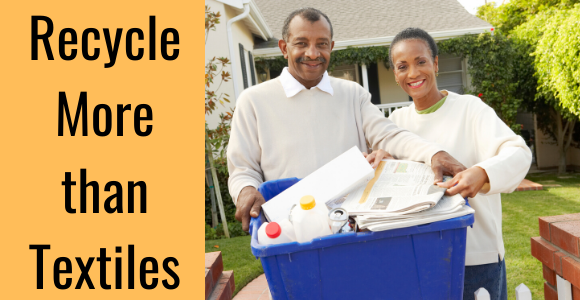
4. Recycle More than Textiles
Though we are a textile recycling company, we are committed to recycling in general, which includes much more than textiles with items such as cardboard and paper, glass, aluminum, plastic and any other product that can have a second life. It is important to recycle all products that you can to keep landfill waste to a minimum, and help take care of our Earth.
What You Can Do
The first thing to learn when recycling is what should I recycle and how should I recycle it? Our local waste company, SWALCO has made this very easy by creating an informative flier with guidelines about which household items should go in recycling bins and other considerations such as cleaning containers and not bagging recyclables. Check out their flier here.
“In the United States, we throw away 2.5 million plastic bottles every hour – about 42,000 per minute, or about 695 per second.” This statistic doesn’t have to be the case. Recycle the bottles you do use, and when possible, take your own reusable water bottle with you. Airports and other high traffic places have added water bottle refill stations to the already existing water fountains to make it easy to have clean water in an environmentally-friendly bottle while you are traveling or out and about.
Benefits
-Do your part in taking care of the Earth
-Gain a sense of purpose in recycling responsibly
-Know that you are recycling the right things in the right way so that more doesn’t end up in landfills
-Become a part of a community that works toward helping the environment and creating a better future for our planet
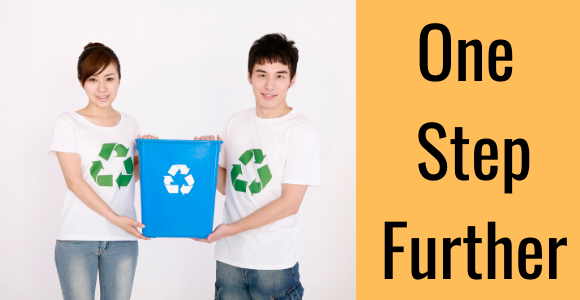
5. One Step Further
For those of you who already recycle items at home and your textiles, your resolution might be to go one step further in helping the environment. As we’ve mentioned before in other blog posts, we urge you to not only recycle household items, but to go one step further in reducing your carbon footprint. There are always new ways we can change how we live to make a difference for our planet.
There are many ways to make simple lifestyle changes that can affect the environment for the better. Small changes build up to large differences, especially when you help spread the word so that others also make these small changes. The biggest difference you can make is doing your part in recycling and helping Chicago Textile Recycling spread the word about the importance of recycling for everyone.
What You Can Do
As you unsubscribe from retail store emails with advertising that begs you to buy more clothes and other products, also contact those companies and stores sending junk mail and other unwanted printed advertising mail. Recycle what does come in the mail because “the majority of the 4 million tons of junk mail that Americans receive annually ends up in landfills.” Another interesting fact is that “the energy used to create and distribute junk mail in the US for one day could heat 250,000 homes.” By doing small things, we can help to reduce this number.
As the major shopping holidays are now behind us, we should be aware that “while the United States celebrates the holidays, Americans produce an additional 5 million tons of waste (four million of the 5 million tons consisting of wrapping paper and shopping bags).” As we look toward the new year, let’s resolve to lessen that statistic dramatically. Take reusable bags with you as you shop, find creative ways to wrap such as tea towels, cleaned chip bags used inside out, wordsearch puzzle paper, or simply recycled and recyclable craft paper colored by you or your children.
Go paperless. Switch all of your bill paying to online. This will help you save money by no longer buying stamps but also save unnecessary use of paper, and save trees. “On average, Americans use 650 pounds of paper a year. Each.” Also, “U.S. businesses use around 21 million tons of paper every year.”
Benefits
-Decrease your carbon footprint
-Feel good about educating others on how to do the same
-Support tree life by doing what you can to decrease paper intake and output in your own home
-Becoming creative in present giving
-Inspire others who see you out and about with reusable bags

Looking Forward to the Year Ahead
The idea of a fresh start for a new year can be a very exciting and promising venture. Regardless of where you are on your recycling journey, there are always new ways of doing more and new ideas on becoming creative with what you already own. Chicago Textile Recycling is wishing each of you a wonderful new year in 2020 and will continue to encourage and challenge you through blogs, articles and idea posts to make small changes in your life so that all of us collectively can have a healthier planet for our future.
Recycling Statistics pulled from this website
Fashion Statistics pulled from this website
